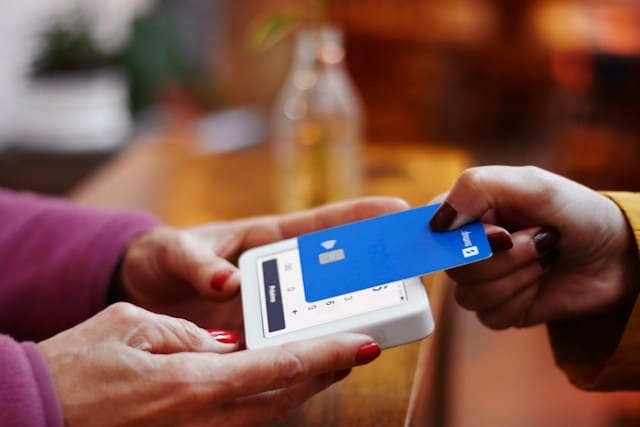Have you ever dreamed of leaving your complicated wallet behind and just using your mobile to pay? Or even your face or fingerprint? Well, you are not alone. We are living in the digital age and technology is rapidly changing the way we make transactions. One of the most promising advances in this field is the use of biometrics for payment authentication. Today, we’ll dive deep into the world of biometric payments, and explore the advances being made.
The Rise of Biometric Payments
Biometric payment is a point of sale (POS) technology that uses biometric authentication methods to identify the user and authorize the payment. It uses physical or behavioral characteristics, such as fingerprints, facial recognition, or even voice recognition, to verify users’ identities, thus ensuring a higher level of security for digital transactions.
A lire également : What is the future of wearable tech in personal health monitoring?
Biometrics have been used in various sectors like immigration, law enforcement, and more recently in mobile technology for user authentication. However, their adoption in the payment industry is a relatively recent phenomenon. This can be attributed to advances in technology, a greater need for security, and an increasing willingness among consumers to embrace non-traditional payment methods.
In the past, the idea of using biometrics in payments might have seemed like something out of a sci-fi movie. However, today, it’s no longer a distant dream. Biometric authentication is becoming more common place in everyday life, thanks to the proliferation of smartphones and wearables, which often come equipped with fingerprint scanners or facial recognition systems.
A voir aussi : What are the innovations in tech for enhancing firefighting techniques?
Facial Recognition Payments
Facial recognition is one of the most popular forms of biometric authentication in payment systems. It requires a camera to capture a user’s facial features, and AI technology to match these features with the ones stored in the database.
Advancements in AI technology have led to the development of advanced facial recognition systems that are not only accurate but are also able to work in different light conditions and angles. They can even recognize a user if they have aged, grown a beard, or are wearing glasses or a hat. This makes facial recognition a robust and reliable method for payment authentication.
One major advantage of facial recognition is that it’s contactless, making it more hygienic and convenient for users. This has gained importance in the wake of the COVID-19 pandemic, where contactless payments have become a necessity rather than a luxury. Several businesses, especially in China, are now using facial recognition for payments, and it’s only a matter of time before it becomes mainstream globally.
Fingerprint Authentication
Fingerprint authentication is another popular form of biometric technology used in payment systems. This technology uses unique patterns found on a person’s fingerprint to authenticate a user’s identity.
Fingerprint scanners have been around for a while, and their use in payment systems is not entirely new. However, recent advancements have led to the development of more sophisticated and secure systems. Newer models can read beneath the skin’s surface to capture a 3D image of the fingerprint, making them more accurate and harder to trick.
Just like facial recognition, fingerprint authentication is also contactless and can be done quickly, making transactions fast and seamless. Many mobile devices and credit cards now come with built-in fingerprint sensors, allowing consumers to make secure payments with just a touch.
Future of Biometric Payments
While facial recognition and fingerprint scanning are the most common forms of biometric payments, they are not the only ones. Other forms of biometrics like retinal scanning, voice recognition, and even vein recognition are being explored for use in payment systems.
The future of biometric payments is undoubtedly exciting. With the rapid advances in AI and machine learning technologies, these systems will become even more accurate and secure. As consumers become more comfortable with these technologies, biometric payments will continue to grow in popularity, potentially becoming the standard for all digital transactions.
In the end, the goal of biometric payments is to make transactions more secure and convenient for users. Through the combination of these technologies, we are moving towards a future where forgetting your wallet at home won’t be a problem. Who knows, in a few years, we might be able to pay with just a smile or a wave of the hand. The possibilities are endless.
Security and Data Protection in Biometric Payments
Security is a crucial aspect of biometric payments. After all, biometric data is unique and cannot be changed like a password. If your biometric data is compromised, it could potentially lead to identity theft or fraudulent transactions.
However, advances are being made to ensure the security of these systems. Biometric data is typically encrypted and stored locally on a user’s device, rather than on a central server. This reduces the risk of large-scale data breaches. Additionally, advanced algorithms are used to convert this data into a format that cannot be used to recreate the original image, adding an extra layer of security.
As with any technology, biometric payments are not without their challenges. However, with ongoing advancements and improvements, they are poised to revolutionize the way we conduct transactions in the near future. So, keep an eye on this space, because the way you pay for your coffee might soon change forever.
Iris Recognition and Biometric Payment Systems
Another form of biometric technology that is gradually gaining attention in the realm of payment systems is iris recognition. This technology uses the unique pattern in a person’s iris, the colored ring around the pupil, to authenticate their identity.
Iris recognition systems capture an image of the iris and then use artificial intelligence algorithms to analyze over 200 unique points of data, providing a highly accurate form of identification. Unlike other biometric methods, such as fingerprint and facial recognition, iris patterns remain stable throughout a person’s life, making them an extremely reliable form of authentication.
This technology is already being used in high-security environments like airports and government buildings, but its use in payment systems is still in the early stages. However, the potential for iris recognition in biometric payment systems is considerable. It’s contactless, highly accurate, and since the iris is protected by the cornea, it’s difficult to forge or manipulate, adding an extra layer of security to transactions.
Despite its potential, some challenges exist in implementing iris recognition for everyday payments. Capturing a high-quality iris image requires a certain level of cooperation from the user and good lighting conditions. Furthermore, some people may find the idea of having their eyes scanned unsettling. However, as technology advances and people become more familiar with biometric authentication, these challenges could be overcome, paving the way for iris recognition to become a mainstream payment method.
Conclusion: The Future of Biometric Payment Systems
The landscape of payment systems is changing rapidly, with biometric technology at the forefront of this revolution. From facial recognition to fingerprint scanning and even iris recognition, the possibilities for secure and convenient payment methods are expanding every day.
Biometric payments are not just a novelty or a fad. They represent a significant step forward in making transactions more secure and user-friendly. By leveraging unique physical characteristics, biometric systems offer a level of security and convenience that traditional password or PIN-based methods simply cannot match.
It’s clear that biometric technology is revolutionizing the way we think about and interact with payment systems. As these technologies become more sophisticated and widely adopted, it’s not a stretch to imagine a future where we leave our physical wallets at home and pay for everything with just a glance or a touch.
We should understand that the goal of biometric payments is not just about offering another payment option. It’s about enhancing the user experience while at the same time improving security. As we move forward, the emphasis will be on ensuring that these systems are not only secure, but also respect user privacy and data protection regulations.
In conclusion, while there may still be obstacles to overcome and kinks to iron out, the future of biometric payments looks promising. With ongoing research and development, continuous improvements, and an increasing consumer acceptance, it can be expected that biometric payments will become an integral part of our everyday transactions. So next time you go to pay for your coffee, don’t be too surprised if you’re asked for your fingerprint or a quick iris scan instead of your credit card.











